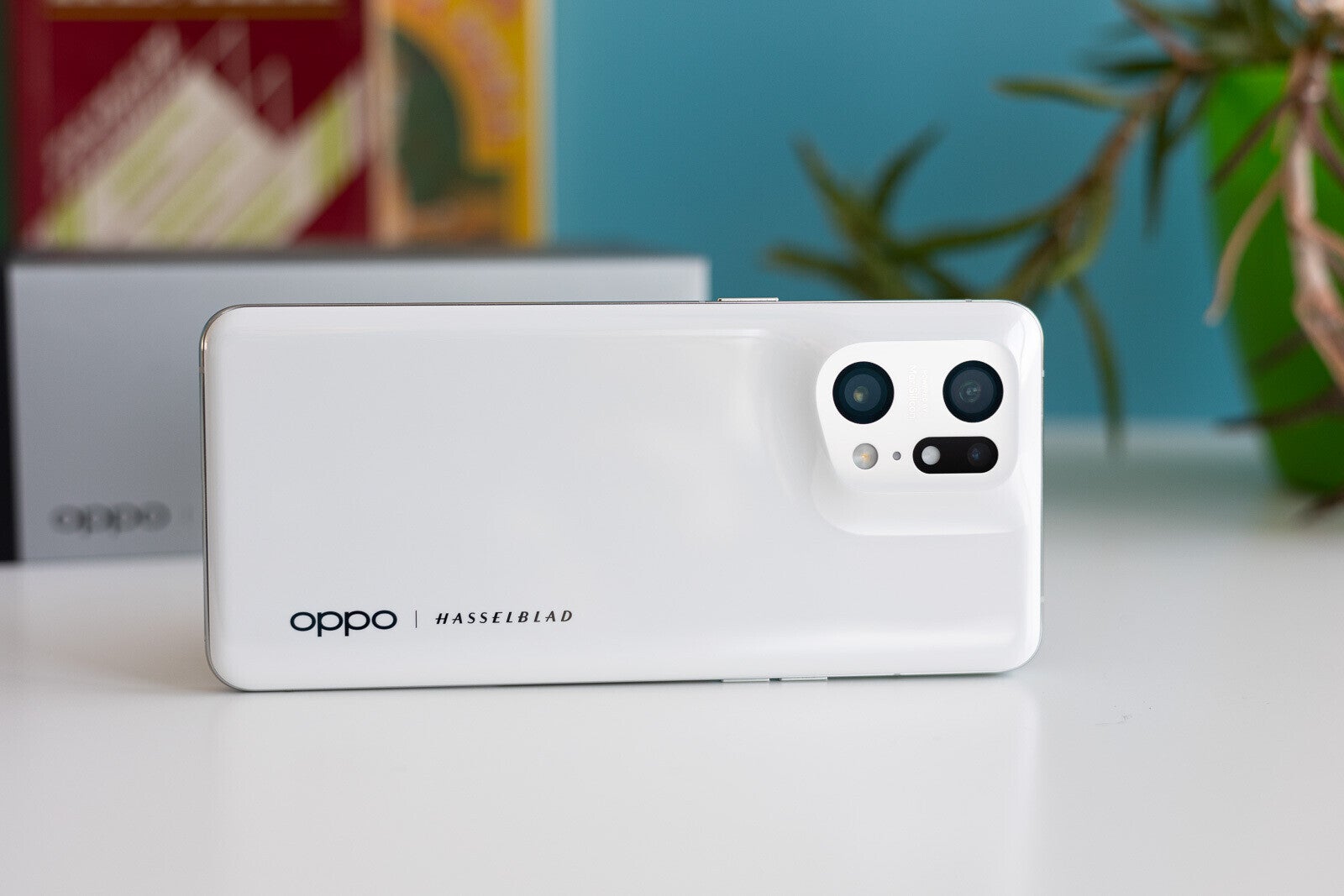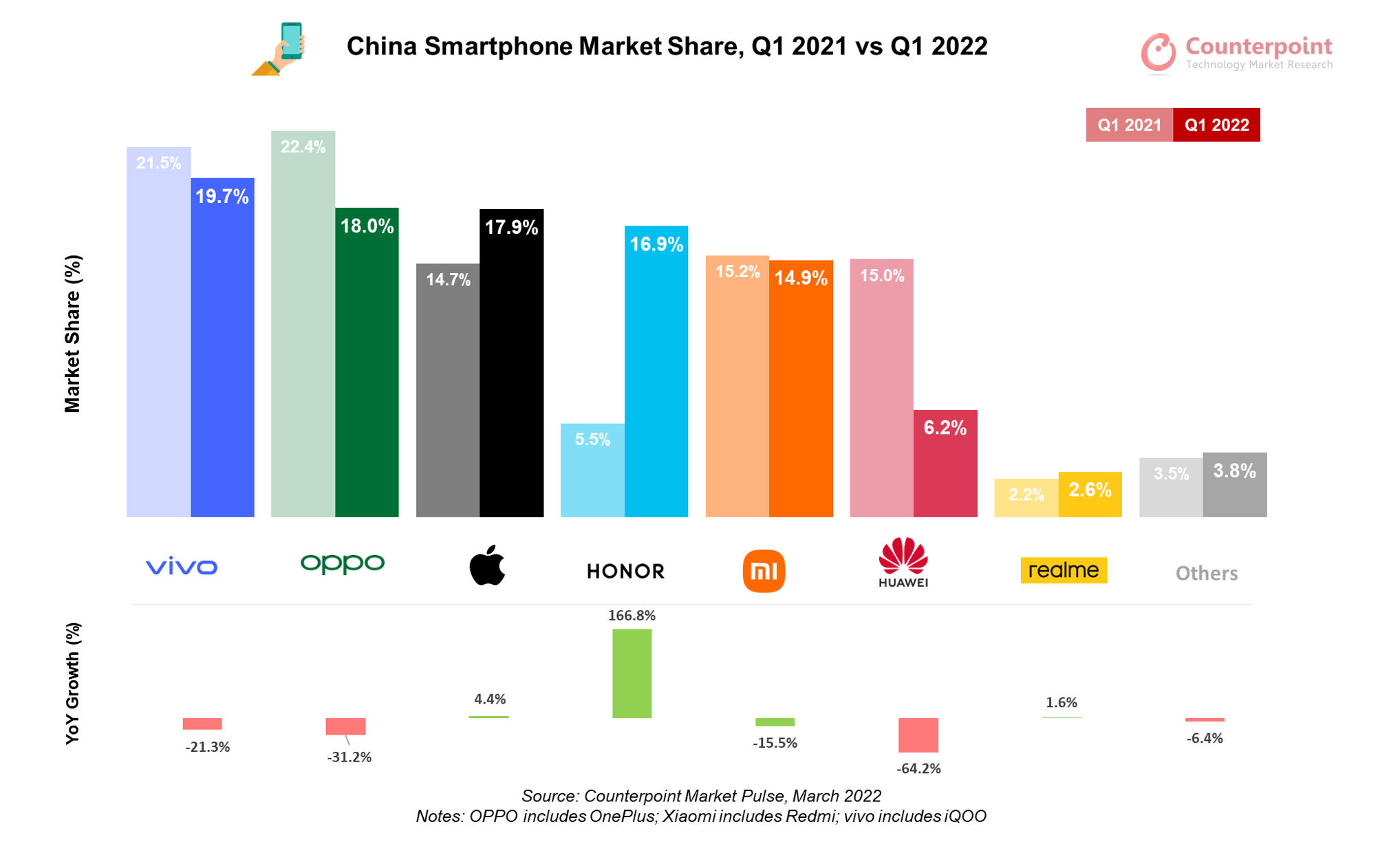Honor and Apple rise as Huawei’s decline continues in the Chinese market
The European and North American smartphone markets have experienced successful recoveries since the first lockdowns two years ago. But recent COVID-19 outbreaks in China have brought the local smartphone down to its knees.
reveals that smartphone shipments in China declined 14% year-on-year during the first quarter of 2022, reaching 74.2 million units and inching closer to the levels seen in Q1 2020. The report notes that demand collapsed because of a multitude of factors.
Honor and Apple are the big winners
Honor has experienced quite the rollercoaster in recent times. It dominated the Chinese market with Huawei’s help a few years ago before experiencing a rapid fall from grace under the weight of US sanctions. Now, as an independent brand with access to components from all manufacturers, Honor has risen from its own ashes to become the fourth-largest smartphone brand in China ahead of Xiaomi.Honor’s local sales increased a whopping 166.8% year-on-year during the first three months of the year, meaning it now holds a market share of almost 17% compared to 5.5% twelve months earlier. The brand’s success in China can be attributed to the Honor 60, which even helped Honor beats its Q4 2021 shipments despite the overall market weaknesses. Honor’s rise is expected to continue in the coming months.
Apple was the other big winner among the major brands. Continued demand for the iPhone 13 — the best-selling smartphone in China — lead to a 4.4% year-on-year increase in shipments. While small, that improvement was enough to take Apple’s market share from 14.7% to 17.9%, in turn making iPhone the third-most-popular smartphone brand in China behind Vivo and Oppo.
As noted in previous reports, Apple and the iPhone have benefited from Huawei’s rapid decline and so far no other local brand has been able to compete on a significant level in the premium segment.
Vivo and Oppo continue to lead China
After briefly losing its number one spot to Apple in the holiday quarter, Vivo retook the lead in the first three months of 2022, despite experiencing a significant drop in sales of 21.3%.
Counterpoint Research clarifies that most of Vivo’s success can be attributed to the Vivo Y series of devices, which target the low-end segment. The mid-range Vivo S12 line also found a good audience among young consumers.

Huawei was (once again) the biggest loser
Huawei once commanded a market share of almost 50% in China with the help of its (now-former) sub-brand. Twelve months ago, that had slipped to 15% following the split from Honor, and now it’s even lower — 6.2% to be precise.There’s not much to say here. Huawei has found it difficult to compete ever since US sanctions were imposed, and its inability to release 5G-ready smartphones in a market where 5G is the standard makes it extremely tough to compete in China.
The foldable Huawei P50 Pocket was one of the best-selling foldable smartphones in the first quarter, but ultimately the foldable segment accounts for less than 1% of total sales in China, so the impact is negligible.

For all the latest Technology News Click Here
For the latest news and updates, follow us on Google News.
